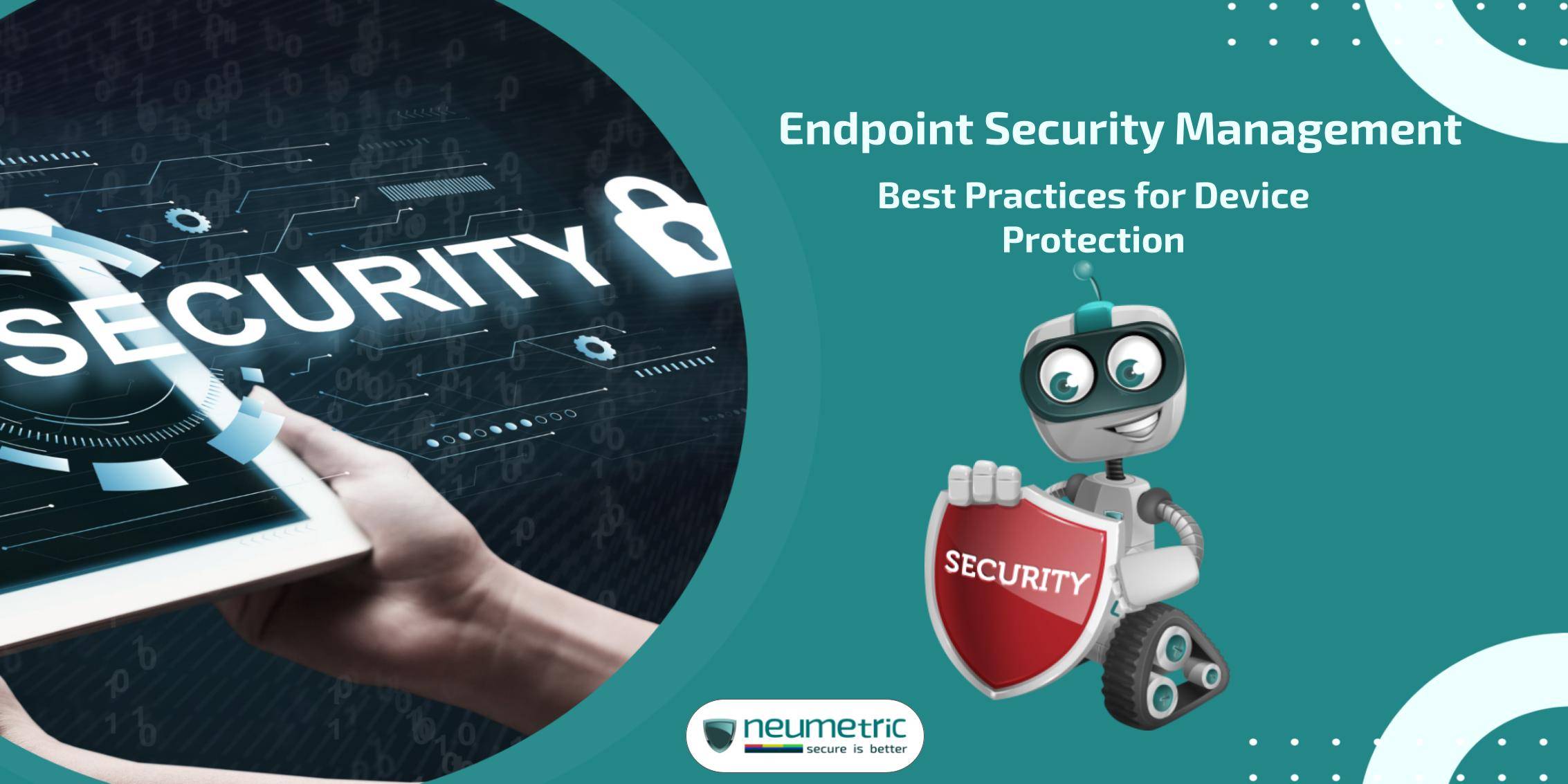Table of Contents
ToggleIntroduction
Endpoint security management involves securing the various entry points or endpoints, in a network. These endpoints could be devices such as computers, laptops, smartphones & even servers. It’s the first line of defence against cyber threats that continually evolve & grow more sophisticated. In the face of an ever-expanding digital threat landscape, the implementation of best practices for device protection isn’t just advisable; it’s imperative. This Journal will explore the multifaceted aspects of endpoint security management, unravelling its definition, discussing its critical role in overall cybersecurity strategy & dissecting the key elements that constitute effective endpoint security.
The need for robust endpoint security becomes glaringly evident when we consider the escalating statistics of cyber threats targeting devices. According to recent reports, global cyber attacks have increased by thirty eight percent (38%) in 2022 and even higher in 2023. This alarming trend highlights the urgency for organisations & individuals alike to fortify their devices against potential breaches.
Understanding Endpoint Security Management
Endpoint security management is more than a set of tools; it’s a holistic approach to protect devices connected to a network. It involves deploying security measures to endpoints to ensure they are shielded from unauthorised access, malware & other cyber threats. Essentially, it’s the art of fortifying the digital gateways to our data.
Critical Component in Cybersecurity Strategy: Endpoint security management isn’t a standalone solution but a critical component in the broader tapestry of cybersecurity. Its significance lies in its ability to address vulnerabilities at the source – the devices themselves. By securing endpoints, organisations can mitigate risks, prevent data breaches & fortify their overall cybersecurity posture.
Key Elements & Components: The effectiveness of endpoint security management lies in its components. These include but are not limited to:
- Device Inventory: Maintaining an up-to-date inventory of all devices connected to the network.
- Software Updates & Patch Management: Regularly updating software & efficiently managing patches to address vulnerabilities.
- Secure Configuration Settings: Ensuring that devices are configured securely to prevent unauthorised access.
- Antivirus & Anti-malware Solutions: Implementing robust solutions to detect & neutralise malicious software.
- Network Segmentation: Dividing the network into segments to contain & isolate potential threats.
- User Education & Awareness: Recognising the human element & educating users on security best practices.
- Incident Response & Monitoring: Developing a plan for swift response to incidents & continuous monitoring for potential threats.
Best Practices for Endpoint Security Management
Importance of knowing all Devices: Imagine trying to defend a castle without knowing all its entry points. The same principle applies to securing a network. Understanding the devices connected to the network is the first step in crafting an effective defence strategy. It’s not just about computers & smartphones; it’s about printers, IoT devices & every potential gateway for cyber threats.
Tools & Strategies for Maintaining an Accurate Inventory: Various tools & strategies can aid in maintaining an accurate device inventory. Automated asset management systems, regular network scans & user reporting are among the tools that organisations can leverage. A real-time, up-to-date inventory ensures that no device goes unnoticed, reducing the chances of unauthorised access.
- Regular Software Updates & Patch Management
Software updates & patches are not just about adding new features; they’re about plugging security holes. Outdated software is a welcome mat for cybercriminals. Regular updates ensure that devices are equipped with the latest defences against known vulnerabilities.
Challenges & Solutions in Patch Management: Balancing the need for security with the potential disruptions caused by updates can be tricky. Effective patch management involves prioritising critical updates, scheduling non-disruptive update times & communicating transparently with users about the importance of timely updates.
- Secure Configuration Settings
Secure configurations act as the digital lock & key, preventing unauthorised access. It involves tailoring device settings to minimise potential vulnerabilities. This goes beyond the default settings; it’s about customising configurations to align with the organisation’s specific security requirements.
Tips for Configuring Devices: Optimal security starts with thoughtful configurations. This includes disabling unnecessary services, enforcing strong password policies & limiting user privileges. Organisations should adopt a proactive approach, regularly reviewing & updating configurations to adapt to the ever-changing threat landscape.
- Robust Antivirus & Anti-malware Solutions
It’s about finding the right fit for your organisation’s unique needs. The effectiveness of antivirus software hinges on its ability to adapt to new threats. Look for solutions that offer real-time scanning, heuristic analysis & regular updates to stay ahead of emerging malware.
Preventing malware requires a multi-layered approach. Combine antivirus tools with user education, secure configurations & regular system scans. Encourage a culture of scepticism – a vigilant user is often the first line of defence against malicious software. Regularly test & update your antivirus strategy to stay ahead in the ongoing cat-and-mouse game with cyber threats.
- Network Segmentation for Enhanced Security
Network segmentation involves dividing the network into isolated segments, limiting the potential impact of a security breach. It’s like compartmentalising a ship to prevent it from sinking if one section is compromised. Segmentation not only reduces the attack surface but also makes it more challenging for unauthorised entities to move laterally within the network.
Endpoint devices often vary in terms of sensitivity & purpose. Segmenting the network allows organisations to tailor security measures based on the specific needs of each segment. Critical data can be safeguarded with additional layers of protection, creating a defence-in-depth strategy that fortifies the entire network.
The Integration of Artificial Intelligence in Endpoint Security
Artificial Intelligence [AI] is not just a buzzword; it’s a game-changer in endpoint security. AI brings a level of sophistication & adaptability that traditional security measures struggle to match. In the realm of endpoint security, AI is not a luxury but a necessity.
How AI Enhances Threat Detection & Response: AI excels at processing vast amounts of data & identifying patterns that might elude traditional systems. In endpoint security, AI-powered solutions can analyse user behaviour, identify anomalies & detect potential threats in real-time. The speed & accuracy with which AI can analyse & respond to threats make it an invaluable asset in the fight against cybercrime.
Balancing Productivity with BYOD Policies
In an era of increasing flexibility & remote work, Bring Your Own Device policies have become commonplace. These policies empower employees to use their personal devices for work-related tasks. While enhancing flexibility, BYOD introduces a new set of security challenges that need careful consideration.
Strategies for Balancing User Productivity with Security: The key to a successful BYOD policy lies in striking the right balance between user productivity & security. Encourage employees to use devices that meet minimum security standards. Implementing mobile device management solutions can provide a level of control & oversight without compromising user experience.
Implementing Effective BYOD Security Measures: BYOD security measures should extend beyond simple password policies. Implementing encryption, enabling remote wipe capabilities & regularly updating security protocols are crucial aspects of a robust BYOD security strategy. Employee education is equally vital; ensuring that users understand the potential risks & their role in maintaining security.
Conclusion
The evolving threat landscape requires proactive measures. Investing in robust endpoint security is an investment in the longevity & resilience of the organisation. In a world where change is the only constant, endpoint security must evolve. The landscape is dynamic & so must be our strategies. Endpoint security is not a one-time task but an ongoing commitment to stay ahead of threats, embrace new technologies & foster a culture of cyber resilience. As we bid farewell, let’s remember that in the digital realm, vigilance is our greatest ally. Stay secure, stay vigilant.





